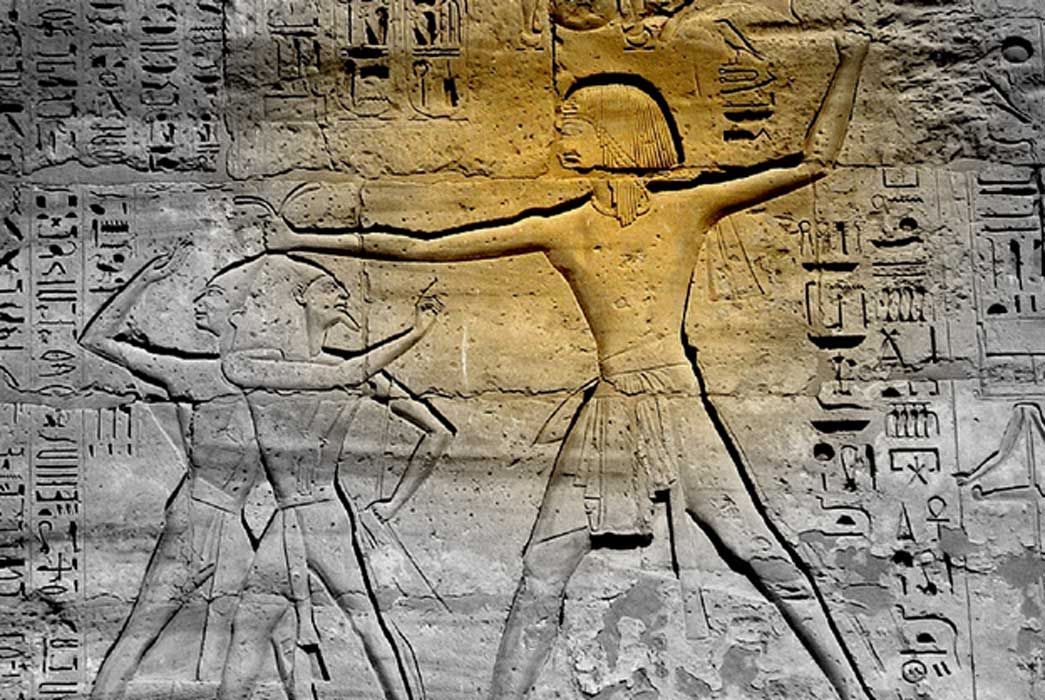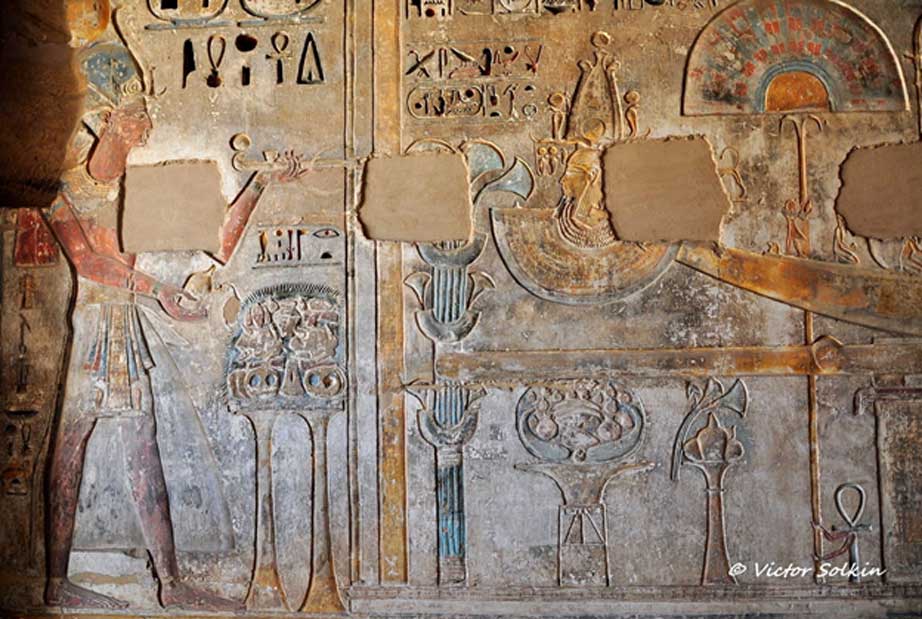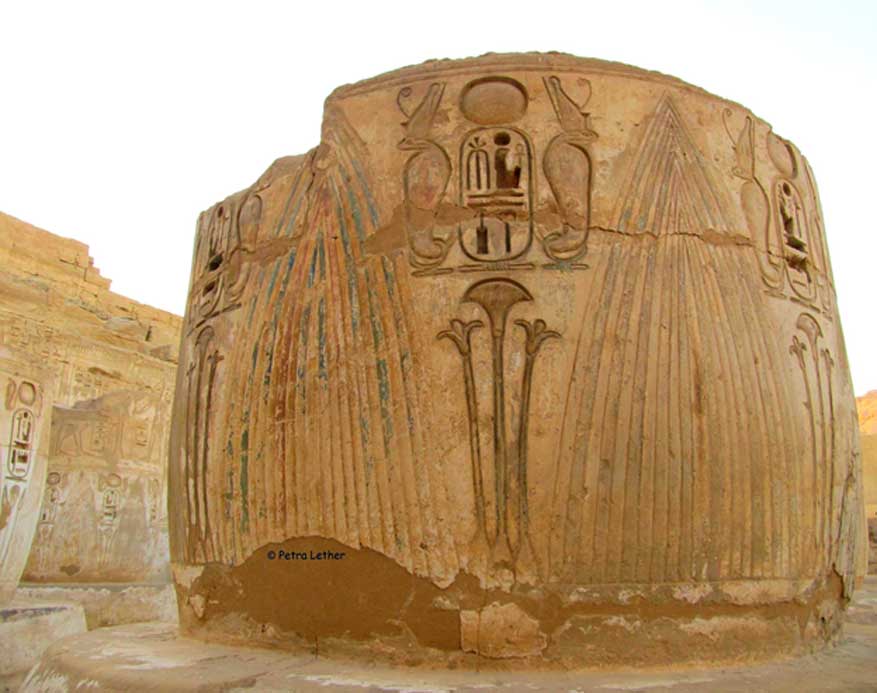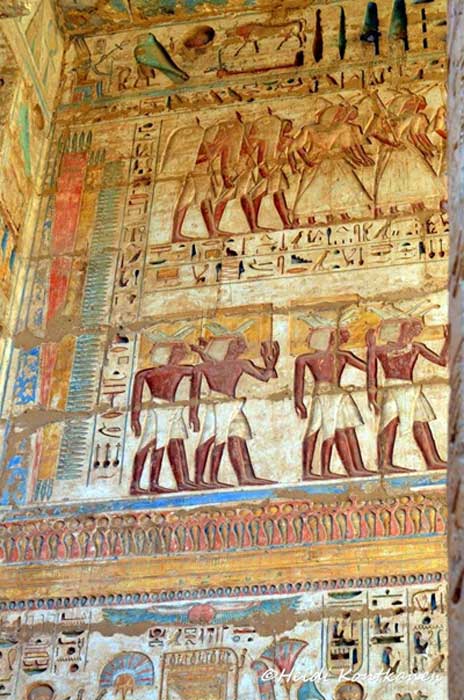
Ramesses III, The Final Warrior Pharaoh: Devastating Sea Peoples and Egypt’s Finest Hour—Part II
The vile and vicious juggernaut of the Sea Peoples had laid waste to several cultures and had dispersed vast populations in their wake. When they were done pillaging and ravaging Levantine empires, the confederation was confident that Egypt, too was theirs for the taking. But this was a gross miscalculation on their part. For there stood one determined man between the brutal aggressors and their dark dream – Ramesses III. The Pharaoh surmounted incredible odds to obliterate the ruthless enemies once and for all; and in doing so, scripted ancient Egypt’s finest hour in the Late Bronze Age world.

A scene on a wall in the mortuary temple of Ramesses III shows the king making an offering of incense and libation in front of a sacred bark of the deified Ramesses II. Medinet Habu.
Sounding the Bugle Call to Battle
The composition of the Sea People’s was not alien to the Egyptians, for, thirty years earlier – during the reign of Pharaoh Merenptah – a considerably disparate confederation made up of Aegean and Anatolian peoples had colluded with the Libyans in a failed effort to invade Egypt. However, in the latest offensive, new peoples had joined hands to cause havoc. Peter Clayton provides further insight, “This was not a small skirmish but a major folk movement by people sufficiently desperate and well-armed to be able to destroy Egypt’s age-old enemy, the Hittite empire. This mass of people was in fact a confederation of which the names are listed, the Peleset (i.e. Philistines), Tjeker (possibly connected with the Teucri of the Troad), Shekelesh (possibly Sikels from Sicily), Weshesh (of uncertain origin), and the Denyen or Dardany (who could be the Danaoi of Homer’s Iliad).” To combat imminent danger, Ramesses III ordered a countrywide conscription, so that the Egyptian forces did not lack the numbers to give a fitting reply.

Remains of a pillar in the massive Hypostyle Hall of Djamet. Mortuary temple of Ramesses III. Medinet Habu. (Photo: Petra Lether)
Amassing a two-fold line of defense, the king ordered trained troops to guard the northeastern border; and he tasked the new recruits to scour the coastline and hinder the passage of hostile forces at the mouth of the Nile. The words of Ramesses III provide us with the exact details of his strategy; which gives us a sense of the heightened excitement and resoluteness that pervaded the air: “I had the river mouth prepared like a strong wall, with warships, troop carriers, and merchant vessels. They were all crewed from bow to stern with brave soldiers, fully armed. The infantry comprised every Egyptian recruit. They were like lions roaring on the mountaintops.”

Ramesses III introduced the system of deeply carved inscriptions, probably in an effort to discourage successors from usurping his monuments. If so, the ploy worked very well. In this colorful scene, subjects from different lands await their turn to pay homage to the Pharaoh during the Festival of Min.




